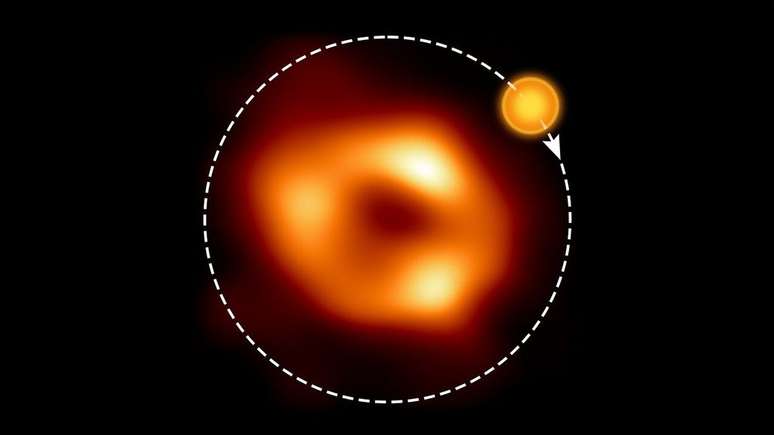Explosions in the accretion disk of the Milky Way’s supermassive black hole are explained in a 3D video, revealing bubbles of lower-density hot plasma
Scientists have used artificial intelligence to reveal the structure of an observed explosion supermassive black hole Sagittarius A* (Sgr A*), located at the center of the Milky Way. The result, presented in video, will help them better understand the chaotic environment around this type of object.
- Sagittarius A*: Everything we know about “our” black hole — so far
- What does the image of Sagittarius A* tell us about black holes?
In 2017, the Atacama Large Millimeter Array (ALMA) in Chile observed Sagittarius A* (pronounced Sagittarius A star) for 100 minutes, shortly after an explosion in its accretion disk.
According to previous studies, such explosions appear to occur quite frequently. The 2017 analysis observed them at 149-minute intervals, while a 2022 survey revealed radio waves at 70-minute intervals.
In addition to radio waves, the events also cause the emission of X-ray signals, but little is known about what actually causes the explosions. The most promising hypothesis is that the fault lies with less dense bubbles in the accretion disc of the black hole.

The accretion disk is made up of matter attracted by the extreme gravitational field of black holes. Before fall within the event horizon (point from which nothing can escape, not even light), this matter is accelerated to astonishing speeds and transformed into plasma, that is, its electrons are stripped from atomic nuclei.
Once free, the charged particles (electrons and protons) are highly sensitive to the black hole’s magnetic fields, giving rise to a phenomenon known as synchroton light, which is the light produced in some particle accelerators. This light is emitted at different wavelengths and can therefore be detected by powerful telescopes.
However, many other things happen in the accretion disk and its interaction with the black hole’s magnetic and gravitational fields; among these, the explosions detected at Sgr A*. To study these processes on a smaller scale, astronomers rely on supercomputer simulations and machine learning algorithms.
Explosions in Sgr A*
The region around our galaxy’s supermassive black hole has been analyzed for years and received a big boost in 2022 thanks to its first real photo taken by the Event Horizon Telescope. With this image, astrophysicists had the unique opportunity to observe the ring-shaped accretion disk around the black hole.
Subsequently, studies conducted by ALMA show considerable variability in the radiation emission from this object due to explosions in the accretion disk, revealing the presence of matter very close to the event horizon. Now, the new study provides a 3D reconstruction of this emission, based on observations from 2017.
To achieve this goal, the authors developed a new computational approach called orbital polarimetric tomography, which differs from the one used by the EHT itself. Instead of observing the evolution of the explosion in several images, using multiple viewpoints, the new study provides a three-dimensional simulation. Check it out in the video below.
The big difference in this approach is that the method considers the movement of light in curved rays, defined by the mass and rotation of the black hole. In conventional simulation, space and time are “flat” rather than curved, generally to spare supercomputers from much more complex calculations – hence the importance of having artificial intelligence to help with modeling.
Thanks to artificial intelligence, capable of three-dimensionally representing the evolution over time of a single pixel (hot spot) in ALMA images, the team was able to observe compact and bright regions at a distance of approximately six times the distance radius From event horizon.
This simulation reinforces the idea that frequent explosions in Sgr A* do, in fact, occur due to hot spots, i.e., lower-density plasma bubbles emanating from the accretion disk. The final video matches ALMA’s observations surprisingly well, indicating that this hypothesis is correct.
The article describing the research was published on Nature.
Source: Nature
Trends on Canaltech:
- A meteor is seen in the SC sky traveling at more than 70,000 mph
- Deadpool and Wolverine | 7 Easter eggs and references from the new Marvel trailer
- The probe spots a glass-smooth lava lake on Jupiter’s moon
- Google highlights the fight against climate change on Earth Day
- Who is Cassandra Nova, the villain of Deadpool and Wolverine?
Source: Terra
Rose James is a Gossipify movie and series reviewer known for her in-depth analysis and unique perspective on the latest releases. With a background in film studies, she provides engaging and informative reviews, and keeps readers up to date with industry trends and emerging talents.







